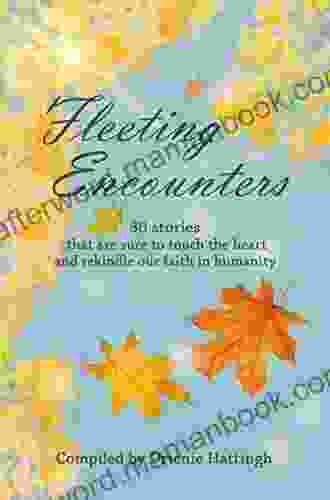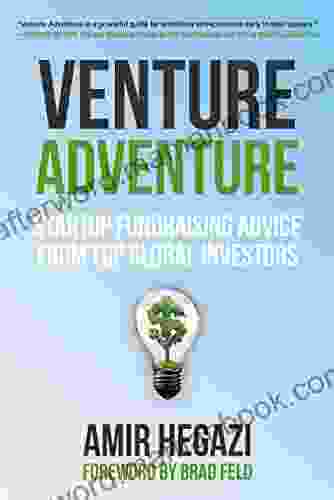A Comprehensive Guide for Early Childhood Educators of Children Learning English as a Second Language

In today's increasingly globalized world, early childhood educators are increasingly likely to encounter children who are learning English as a second language (ESL). These children come from diverse backgrounds and may have varying levels of English proficiency. To effectively support these children in their language acquisition journey, early childhood educators need to be equipped with the necessary knowledge and strategies. This comprehensive guide will provide early childhood educators with everything they need to know to create a supportive and effective learning environment for children learning English as a second language.
4.4 out of 5
| Language | : | English |
| File size | : | 5920 KB |
| Text-to-Speech | : | Enabled |
| Screen Reader | : | Supported |
| Enhanced typesetting | : | Enabled |
| Word Wise | : | Enabled |
| Print length | : | 280 pages |
Understanding Language Acquisition
Before we can discuss how to teach English to young learners, it is important to first understand how children acquire language. Language acquisition is a complex process that begins in infancy and continues throughout childhood. It involves a number of different skills, including listening, speaking, reading, and writing. Children acquire language through a process of immersion and interaction. They are constantly exposed to language through their interactions with others, and they gradually learn to understand and produce language themselves.
There are a number of factors that can affect a child's language acquisition, including:
- Their age
- Their exposure to language
- Their motivation to learn
- Their individual learning style
It is important to remember that every child is different, and they will acquire language at their own pace. However, there are a number of things that early childhood educators can do to support children's language acquisition, including:
- Providing a rich language environment
- Engaging children in conversation
- Reading to children
- Providing opportunities for children to write
- Creating a supportive and positive learning environment
Teaching English to Young Learners
Once you understand how children acquire language, you can start to think about how to teach English to young learners. There are a number of different methods and approaches that can be used to teach English as a second language, but some of the most common include:
- The communicative approach
- The task-based approach
- The content-based approach
The communicative approach focuses on developing students' communication skills in English. This approach emphasizes speaking and listening, and it is often used in conjunction with other methods. The task-based approach focuses on using English to complete tasks, such as solving problems or creating projects. This approach is often used to teach English for specific purposes, such as English for academic or business purposes. The content-based approach focuses on teaching English through content, such as history, science, or math. This approach is often used in schools where English is the language of instruction.
No matter which method or approach you choose, there are a number of principles that should guide your teaching:
- Make learning fun and engaging.
- Use a variety of teaching methods and activities.
- Provide opportunities for students to practice their English skills.
- Create a supportive and positive learning environment.
- Be patient and encouraging.
Supporting Children's Social and Emotional Development
In addition to providing academic support, it is also important to support children's social and emotional development. Children who are learning English as a second language may face a number of challenges, such as:
- Feeling isolated or different
- Experiencing discrimination or prejudice
- Having difficulty making friends
- Feeling overwhelmed or stressed
Early childhood educators can help children to cope with these challenges by:
- Creating a welcoming and inclusive classroom environment
- Providing opportunities for children to interact with peers from diverse backgrounds
- Teaching children about diversity and inclusion
- Providing emotional support and guidance
- Collaborating with parents and other professionals
Teaching English to young learners is a challenging but rewarding experience. By understanding how children acquire language, using effective teaching methods, and supporting children's social and emotional development, early childhood educators can help children to succeed in their language acquisition journey.
4.4 out of 5
| Language | : | English |
| File size | : | 5920 KB |
| Text-to-Speech | : | Enabled |
| Screen Reader | : | Supported |
| Enhanced typesetting | : | Enabled |
| Word Wise | : | Enabled |
| Print length | : | 280 pages |
Do you want to contribute by writing guest posts on this blog?
Please contact us and send us a resume of previous articles that you have written.
 Top Book
Top Book Novel
Novel Fiction
Fiction Nonfiction
Nonfiction Literature
Literature Paperback
Paperback Hardcover
Hardcover E-book
E-book Audiobook
Audiobook Bestseller
Bestseller Classic
Classic Mystery
Mystery Thriller
Thriller Romance
Romance Fantasy
Fantasy Science Fiction
Science Fiction Biography
Biography Memoir
Memoir Autobiography
Autobiography Poetry
Poetry Drama
Drama Historical Fiction
Historical Fiction Self-help
Self-help Young Adult
Young Adult Childrens Books
Childrens Books Graphic Novel
Graphic Novel Anthology
Anthology Series
Series Encyclopedia
Encyclopedia Reference
Reference Guidebook
Guidebook Textbook
Textbook Workbook
Workbook Journal
Journal Diary
Diary Manuscript
Manuscript Folio
Folio Pulp Fiction
Pulp Fiction Short Stories
Short Stories Fairy Tales
Fairy Tales Fables
Fables Mythology
Mythology Philosophy
Philosophy Religion
Religion Spirituality
Spirituality Essays
Essays Critique
Critique Commentary
Commentary Glossary
Glossary Bibliography
Bibliography Index
Index Table of Contents
Table of Contents Preface
Preface Introduction
Introduction Foreword
Foreword Afterword
Afterword Appendices
Appendices Annotations
Annotations Footnotes
Footnotes Epilogue
Epilogue Prologue
Prologue David Rowan
David Rowan Omar Khayyam
Omar Khayyam Edmund Chua
Edmund Chua Lynn Johnson
Lynn Johnson Joyce Holt Jennings
Joyce Holt Jennings B R Spangler
B R Spangler Miguel Hebrero
Miguel Hebrero Maureen Healy
Maureen Healy David R Klein
David R Klein Vladimir Petrov
Vladimir Petrov Selina Hernandez
Selina Hernandez Bailey Booth
Bailey Booth Ed West
Ed West Jordan Taylor
Jordan Taylor David E Navarro
David E Navarro Dale L Roberts
Dale L Roberts Arno Snydert
Arno Snydert Robyn Cadwallader
Robyn Cadwallader G Keith Parker
G Keith Parker Rw Holmen
Rw Holmen
Light bulbAdvertise smarter! Our strategic ad space ensures maximum exposure. Reserve your spot today!

 Miguel de CervantesPandora Jar: The Unraveling of a Deceptive Identity and a Haunting Mystery
Miguel de CervantesPandora Jar: The Unraveling of a Deceptive Identity and a Haunting Mystery Terry BellFollow ·9.9k
Terry BellFollow ·9.9k Larry ReedFollow ·16k
Larry ReedFollow ·16k J.D. SalingerFollow ·18.8k
J.D. SalingerFollow ·18.8k Clark CampbellFollow ·4k
Clark CampbellFollow ·4k Aaron BrooksFollow ·16.5k
Aaron BrooksFollow ·16.5k Jerry WardFollow ·12.3k
Jerry WardFollow ·12.3k Edmund HayesFollow ·18k
Edmund HayesFollow ·18k Foster HayesFollow ·17.1k
Foster HayesFollow ·17.1k

 Bryce Foster
Bryce FosterViolin Is Easy: A Comprehensive Guide for Beginners
The violin is a...

 Cristian Cox
Cristian CoxThe True Story Of The Ivy League Cowboys Who Raided The...
In the early 2000s, a group of Ivy League...

 Ken Follett
Ken FollettUnraveling the Enchanting World of Menewood: A...
Embark on an enthralling...

 Phil Foster
Phil FosterNorth Poems by Seamus Heaney: An Exploration of Place,...
Seamus Heaney's North...

 Jack Butler
Jack ButlerFleeting Encounters: The Enigmatic Transience of Maria...
In the annals of literary history, fleeting...

 Eliot Foster
Eliot FosterA Haiku Summer: Capturing the Essence of the Season in...
Summer is a time of warmth,...
4.4 out of 5
| Language | : | English |
| File size | : | 5920 KB |
| Text-to-Speech | : | Enabled |
| Screen Reader | : | Supported |
| Enhanced typesetting | : | Enabled |
| Word Wise | : | Enabled |
| Print length | : | 280 pages |










